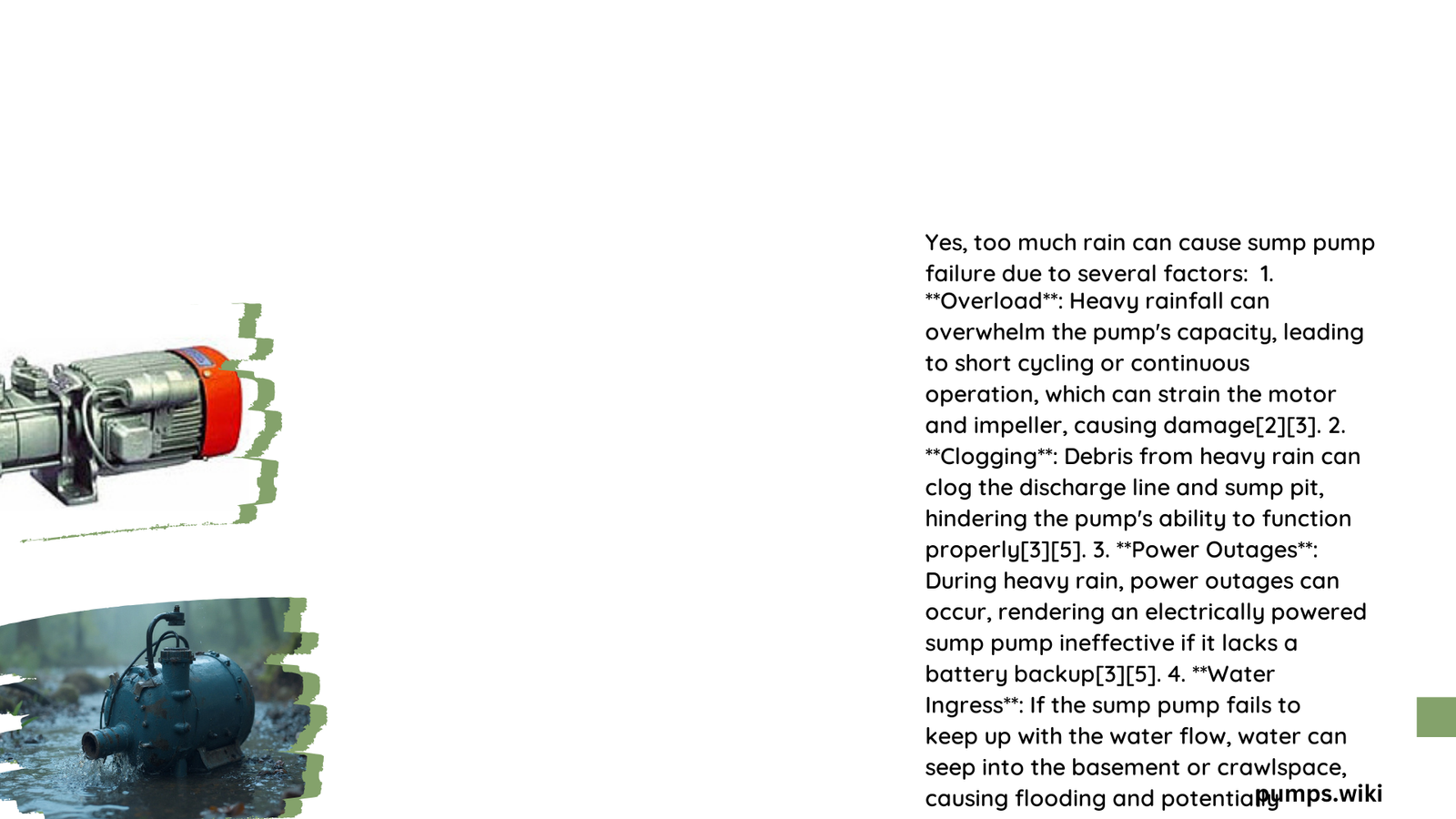Excessive rainfall poses a significant threat to sump pump functionality, potentially causing catastrophic system failure and basement flooding. Homeowners must understand the intricate relationship between heavy precipitation and sump pump performance, recognizing that prolonged or intense rainfall can overwhelm even well-maintained pumping systems, leading to water damage, electrical complications, and costly repairs.
What Happens When Rain Overwhelms Your Sump Pump?
Sump pumps are critical home defense mechanisms designed to prevent water accumulation in basements and crawl spaces. However, during extreme weather events, these systems can become critically vulnerable to failure.
How Does Excessive Rainfall Impact Sump Pump Performance?
Rainfall intensity directly influences sump pump effectiveness through several key mechanisms:
- Volume Overload
- Standard sump pumps typically handle 2,000-4,000 gallons per hour
- Extreme rainfall can exceed pump capacity within minutes
-
Continuous operation increases mechanical stress
-
Groundwater Saturation Risks
- Saturated soil reduces drainage efficiency
- Water table rises rapidly during heavy precipitation
- Increases continuous pump activation
| Rainfall Intensity | Pump Stress Level | Potential Failure Risk |
|---|---|---|
| Light (< 1 inch/hr) | Low | Minimal |
| Moderate (1-3 inches/hr) | Medium | Moderate |
| Heavy (> 3 inches/hr) | High | Significant |
What Mechanical Failures Occur During Heavy Rain?
Several critical mechanical issues can emerge during excessive rainfall:
- Float Switch Malfunction
- Debris accumulation prevents proper activation
- Inconsistent water level detection
-
Prevents automatic pump engagement
-
Electrical System Complications
- Power surges during storms
- Potential circuit breaker tripping
- Risk of complete electrical failure
How Can Homeowners Protect Against Sump Pump Failure?
Proactive strategies can mitigate rainfall-related risks:
- Install battery backup systems
- Regular maintenance and inspection
- Consider higher capacity pumps
- Implement drainage improvements around foundation
- Use water-activated backup pumps
What Are the Financial Implications of Sump Pump Failure?
Potential costs associated with system failure:
– Emergency pump replacement: $300-$800
– Water damage restoration: $1,500-$10,000
– Structural repair: $5,000-$25,000
When Should Professional Assessment Occur?
Recommended professional evaluation scenarios:
– After consecutive heavy rainfall events
– Annually before rainy season
– Following any basement water intrusion
– When pump is over 7-10 years old
Critical Takeaways

- Rainfall volume directly impacts sump pump performance
- Mechanical and electrical vulnerabilities increase during heavy precipitation
- Proactive maintenance prevents catastrophic failures
- Professional assessment provides critical risk mitigation
Pro Tip: Always maintain a backup power source and consider installing a secondary pump for maximum protection during extreme weather events.
Technical Specifications to Consider
- Pump capacity: Minimum 3,000 gallons/hour
- Battery backup: 8-12 hour continuous operation
- Discharge pipe: Minimum 1.5-inch diameter
- Check valve: Prevent backflow
Reference:
– EPA Water Damage Prevention Guidelines
– National Weather Service Rainfall Data
– Sump Pump Manufacturers Association
